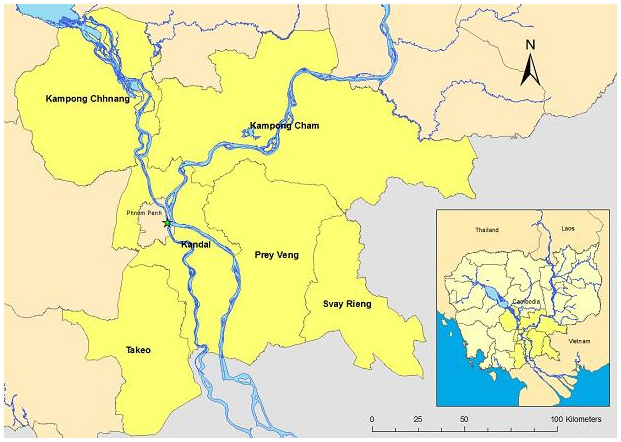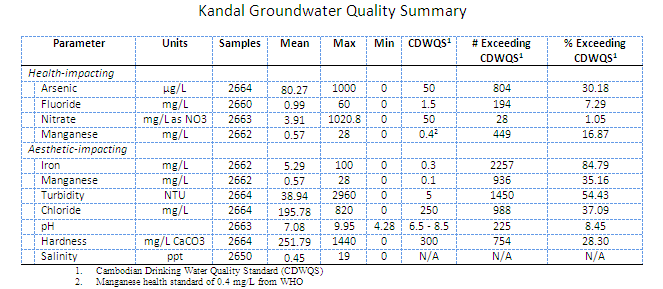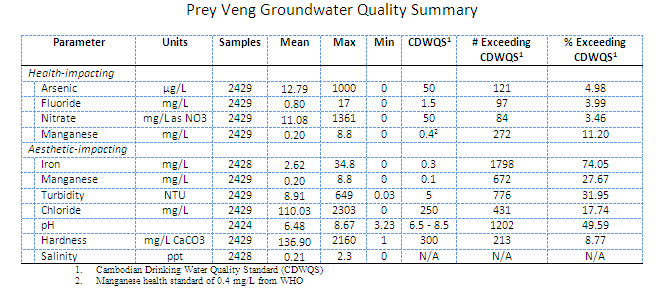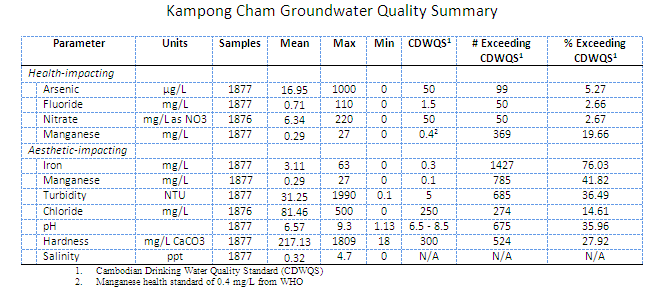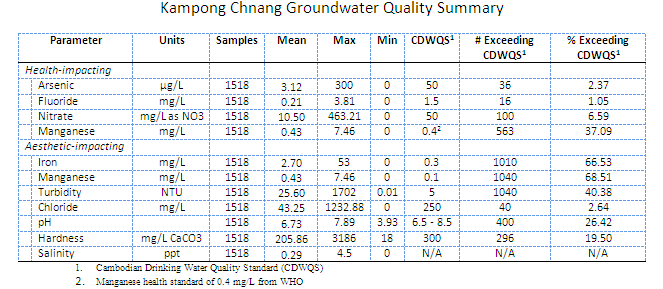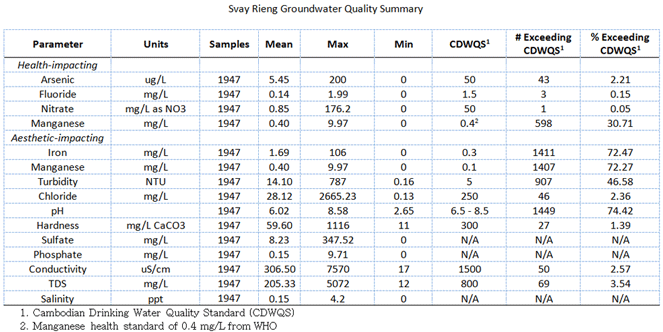Groundwater is utilized significantly throughout rural Cambodia because it is typically less contaminated with pathogens than surface water and provides sufficient water quantity for many domestic uses. The two figures below show the percentage of the population drinking groundwater in the dry season, broken down by tube wells (typically 15-80 meters deep) and dug wells (typically 3-15 meters deep) (National Institute of Statistics, National Census 2008).
- No 50A, Phum Prek Thom Sangkat Kbal Koh, Khan Chbar Ampov
- 855 (0)12-200-235
- info@rdic.org
Summary of Groundwater Data
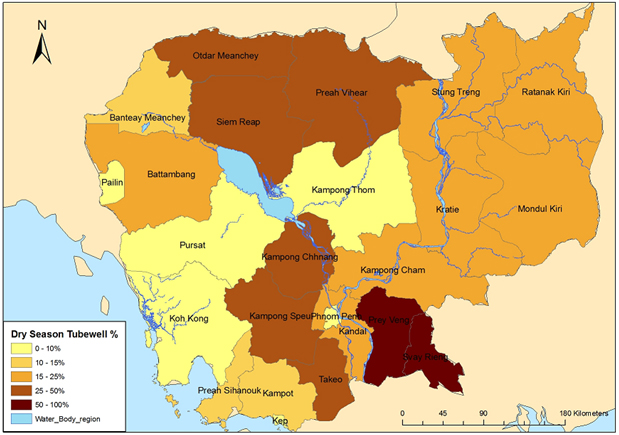

Dug well water is heavily consumed in Kampong Thom province and is high in most other provinces with the exception of Kandal, Prey Veng, and Svay Rieng. The next figure shows the breakdown of drinking water sources in the dry season for all of Cambodia (National Institute of Statistics, National Census 2008).
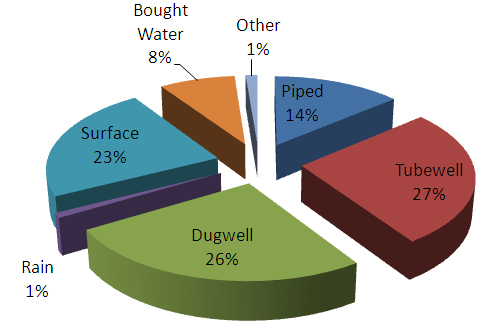
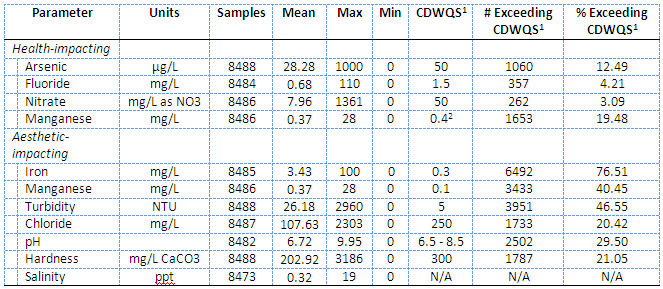
1. Cambodian Drinking Water Quality Standard (CDWQS)
2. Manganese health standard of 0.4 mg/L from WHO
